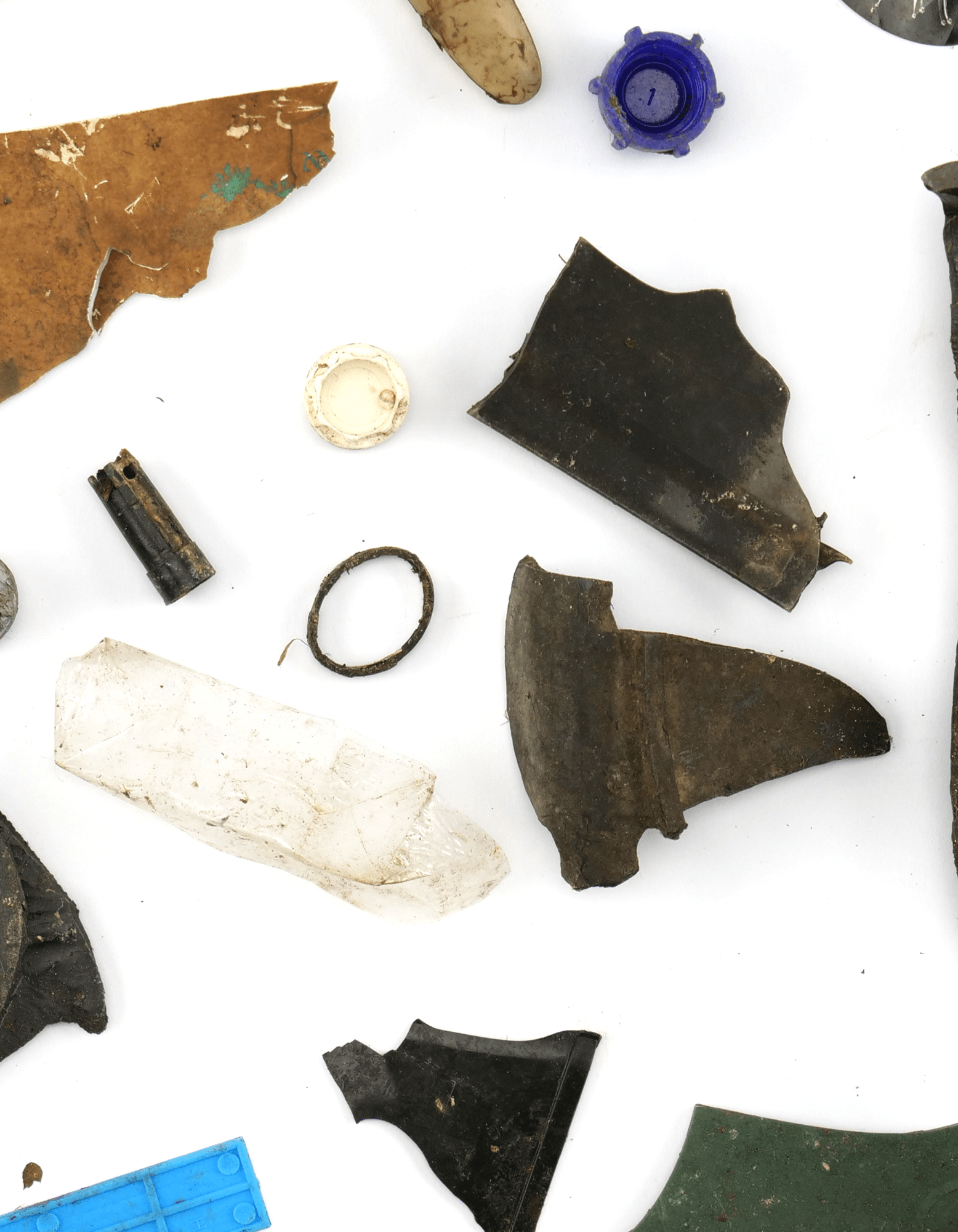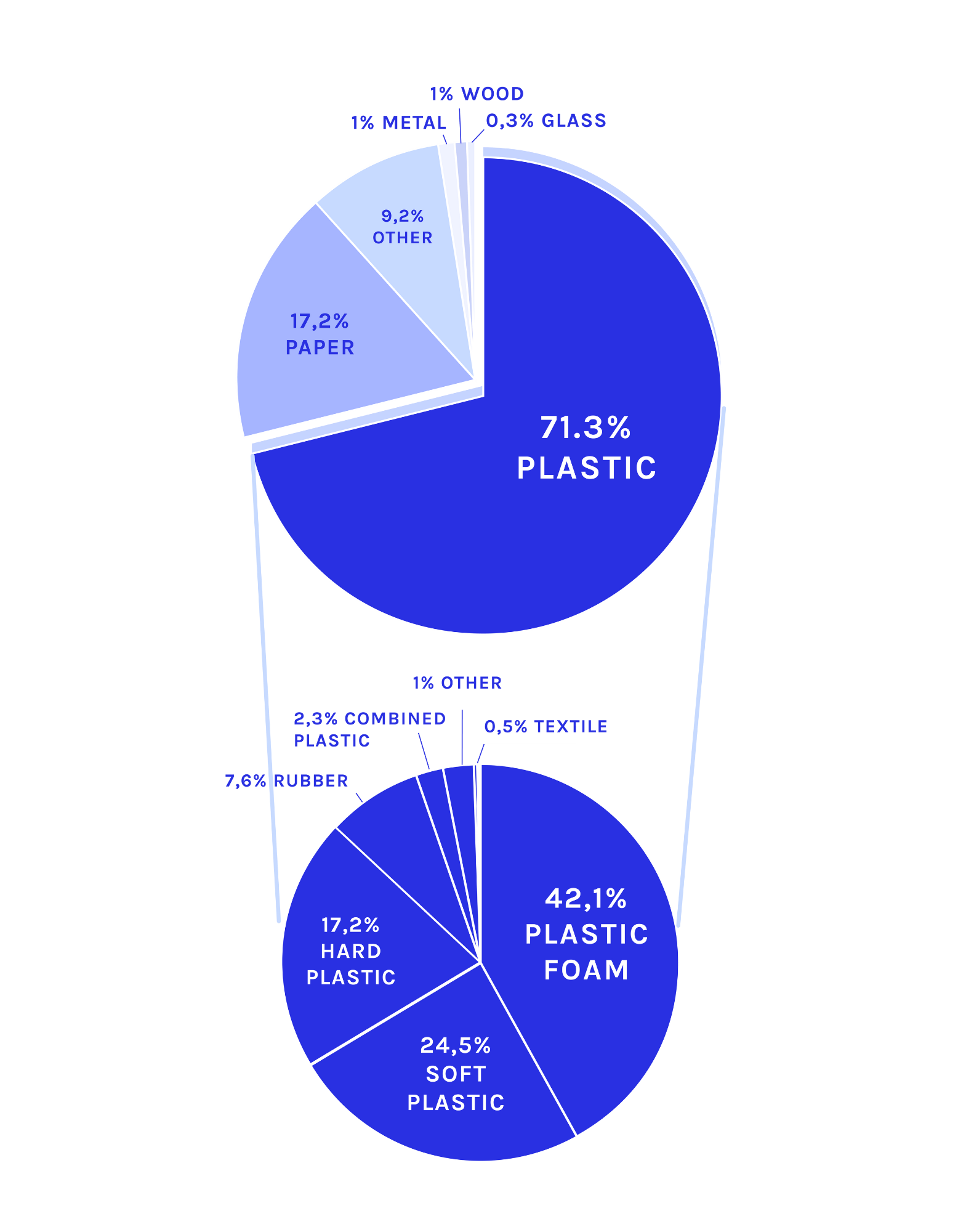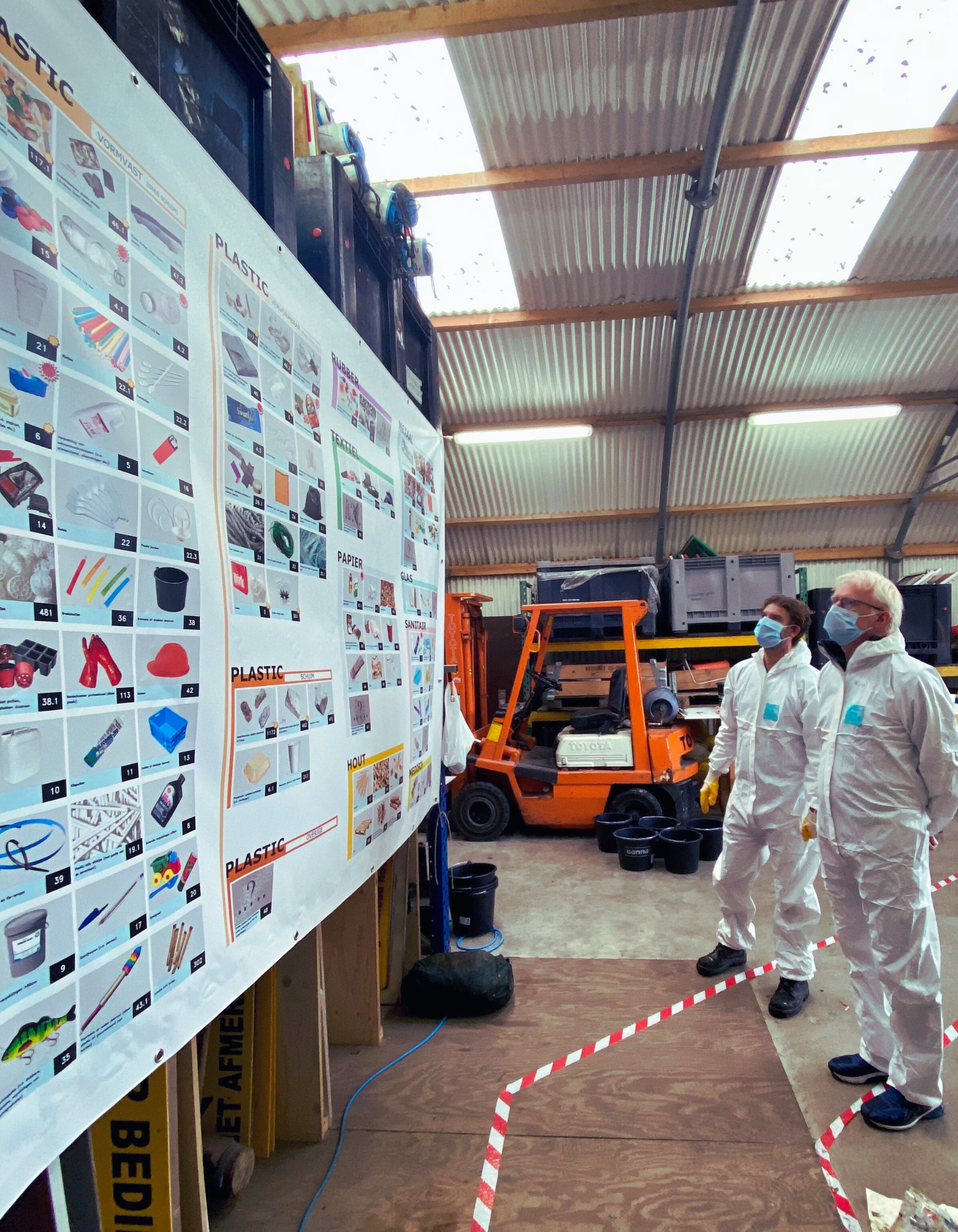OUR IMPACT
Bubble Barrier Amsterdam
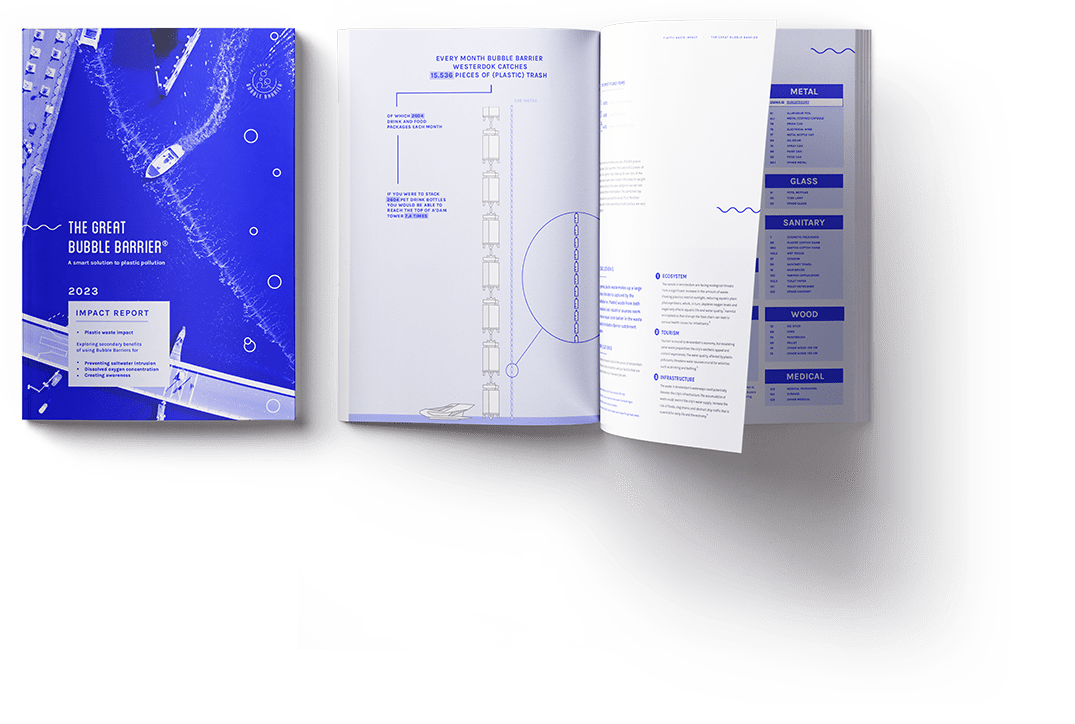
BUBBLE BARRIER AMSTERDAM
Plastic Waste in Amsterdam
Bubble Barrier Amsterdam effectively catches plastic waste in the Westerdok canal and collects 80 kg or 15.536 pieces of inorganic debris per month.
The Great Bubble Barrier installed the first long-term Bubble Barrier in Amsterdam in 2019. The project was commissioned by Waterschap Amstel, Gooi and Vecht and the Municipality of Amsterdam.
To monitor the success and impact of the Bubble Barrier a research alliance with the Plastic Soup Foundation and Waternet was formed to monitor the Bubble Barrier’s catch.
Over one year, a total of 38,178 pieces of dried, inorganic waste was monitored and categorised using the OSPAR method.
BUBBLE BARRIER AMSTERDAM
What is the total catch made up of?
After sorting Bubble Barrier Amsterdam’s catch into the twelve main OSPAR categories, we observed that the most common material found – over 71% – was plastic.
When dividing the total plastic, we found that the largest category is plastic foam (such as styrofoam), followed by soft plastic (such as food wrappers), and then hard plastic (such as PET bottles). OSPAR is a wonderful tool, but no method is perfect.
Finn Begemann, Impact Researcher, explains:
“Items that contain plastic, such as drink cartons or cigarette filters, are categorised under ‘paper’, which can skew our perception of the extent of the plastic problem.”
BUBBLE BARRIER AMSTERDAM
The most common items found in Amsterdam
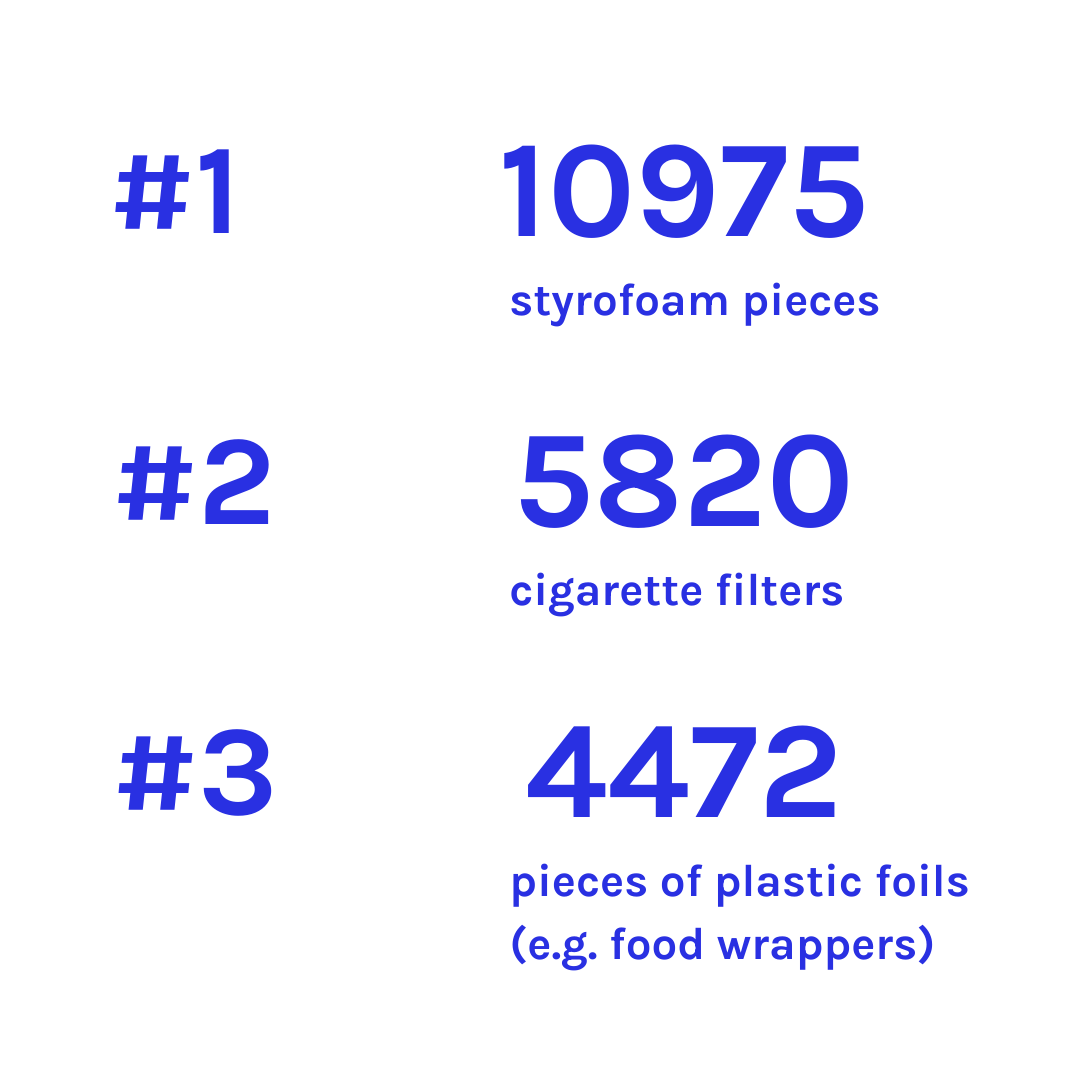
#1
#2
#3
styrofoam pieces*
cigarette filters*
pieces of plastic foils (e.g. food wrappers)*
*Out of a total of 38,178 pieces of dried, inorganic waste that was monitored over a 1 year period from Bubble Barrier Amsterdam
#1
#2
#3
styrofoam pieces
cigarette filters
pieces of plastic foils (e.g. food wrappers)
BUBBLE BARRIER AMSTERDAM
How do we monitor river plastic?
With the help of a team of volunteers the waste collected by Bubble Barrier Amsterdam was first dried, after which any organic materials – such as leaves or branches – were sorted out and excluded.
The remaining catch was categorised into over 100 categories following the OSPAR method, and weighed. As part of this research alliance, an additional brand audit was performed by the Plastic Soup Foundation.
The aim of the research was to not only gather insights into the efficacy of the technology, but also to analyse plastic pollution trends, as well as variations of catch per season.
Want to learn more?
Visit the Bubble Barrier Amsterdam project page.
Want to learn more?
BUBBLE BARRIER AMSTERDAM
Secondary Benefits
Besides capturing plastic pollution, Bubble Barriers can have a positive impact on other environmental issues as well. Our team of researchers looked into the secondary benefits of a Bubble Barrier, such as preventing saltwater intrusion, increasing awareness and increasing oxygenation.
1. Increasing Oxygenation
Bubble Barriers use ambient air bubbles to capture plastic pollution. The air bubbles can locally affect the levels of dissolved oxygen in a waterway. In general, low concentrations of dissolved oxygen pose threats to local flora and fauna. To create stable and healthy dissolved oxygen levels, Bubble Barriers can be of help.
“My research revolved around measuring and analysing the Bubble Barriers’ ability to prevent saltwater intrusion and aerate the canal. This is of great interest, as these environmental factors have a significant impact on ecosystem health and water quality.”
Liam van den Heuvel, Researcher Oxygenation & Saltwater Intrusion Prevention
2. Preventing Saltwater Intrusion
Bubble Barriers can help prevent saltwater intrusion in rivers. Salinisation in freshwater rivers is a growing problem, causing issues with agriculture, drinking water and biodiversity. Currently, bubble curtains are used globally to prevent saltwater and freshwater from mixing. Installing a Bubble Barrier to capture plastic pollution can have the additional benefit of preventing saltwater intrusion.
“During this research I delved into the topics of salination and oxygenation of waterways and their correlation with the Bubble Barrier. It’s been a pleasure applying my expertise in monitoring river plastic to Amsterdam’s canals throughout this case study.”
Finn Begemann, Impact Researcher
3. Increasing Awareness
Bubble Barriers, apart from capturing plastic, help raise awareness on plastic pollution. The bubbles literally bring the plastic problem to the surface. Interacting with the Bubble Barrier and the collected plastic can increase awareness among citizens ans tourists, and support lasting pro-environmental behaviour change.
“Bubble Barriers aren’t purely practical devices. Its strategic placement, visibility, and emotional appeal educates and motivates the public to take action.”
Elena Suermondt, Researcher Awareness

